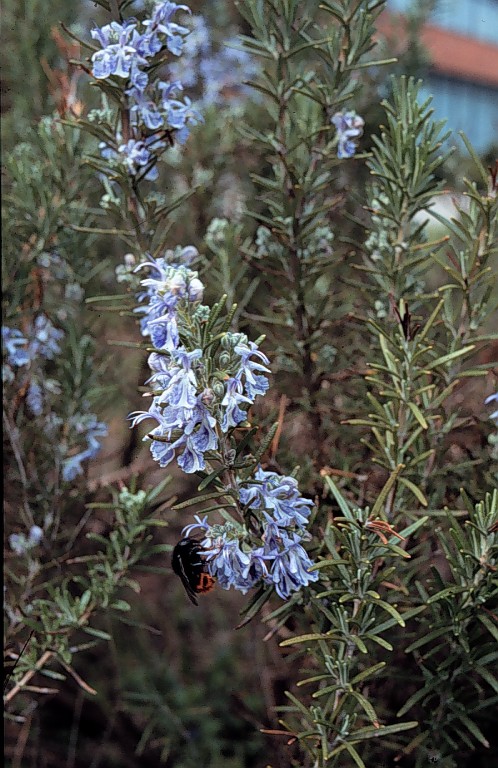Rosmarinus officinalis L. – Rosemary

Rosmarinus officinalis is a perennial, evergreen aromatic shrub in Lamiaceae family (N). The height of the plant is 0.5-1.5 m. The root and shoots are branched, wooden. The greyish leaves are narrow, needle-like, 1.5-4 cm long, 2-3 mm wide, with entire margins, they are covered with hair and don’t have stalks on them. The flowers are light blue or white, bloom from March to June. The fruits are light or dark brown, but usually not viable. In Hungary rosemary is propagated vegetatively.
Rosmarinus officinalis originate from the Mediterranean: it is native to Spain, South France, Italy, Dalmatia, Switzerland, Azores Islands, Canary Islands, Madeira, Corsica and North Africa. Rosemary is drought-tolerant, grows well in warm, sunny places. The frost tolerance of the plant is low, in Hungary rosemary only overwinter in protected, warm places.
Rosmarini folium , the dried leaves of rosemary and Rosmarini aethetroleum, the essential oil distilled from the floral shoots, are the official drugs in Ph.Hg.VIII. The standards prescribe 12 ml/kg essential oil in the drug and at least 3 % rosmarinic acid in the oil.
The whole plant accumulate essential oil: the content is the highest in the leaves (1.0-2.5 %), floral shoots contains it in 0.5-1.5 %. Other active substances are tannins, cinnamic acid derivates (mainly rosmarinic acid), flavonoids (apigenin, luteoline and its glycosides), triterpenes and diterpene bitters. The main volatile compounds: 1.8-cineol (13-35 %), camphor (15-25 %), borneol (15 %), bornyl acetate, pinenes, kamphene and linalool.
Rosemary leaves antibacterial, antiviral, antioxidant, antiseptic, antispasmolytic, cholagoge, hepatoprotective, anti-inflammatory, antitumor activities are proved. The infusion of the herb is applied in gastric disorders. Internally, the essential oil is stimulating the blood circulation and effective against rheumatic problems. Rosemary oil is used in cosmetics and in liqueurs as well.

